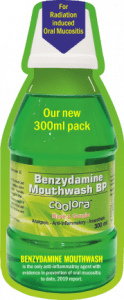Menu

Dental implants have revolutionized modern dentistry, offering predictable outcomes for tooth replacement. However, long-term success is closely tied to the prevention and management of peri-implant infections. Among various preventive strategies, the use of chlorhexidine (CHX) gel has emerged as a cornerstone in reducing bacterial contamination and supporting peri-implant health. This blog reviews the scientific rationale and clinical evidence supporting the use of CHX gel in implantology, drawing on key studies referenced in recent literature.
Peri-implant diseases, particularly peri-implantitis, are driven by complex microbial communities, including pathogens like Porphyromonas gingivalis. [1] Bacterial adhesion and biofilm formation at the implant-abutment interface can trigger inflammation and bone loss, jeopardizing implant stability. Controlling this microbial burden is essential for successful osseointegration and long-term
implant survival.
Chlorhexidine is a bisbiguanide antiseptic renowned for its broad-spectrum activity against both Gram-positive and Gram-negative bacteria, as well as fungi [2]. It exerts bacteriostatic and bactericidal effects by disrupting microbial cell membranes and inhibiting plaque formation [3]. Its superior antimicrobial properties make it a gold standard in oral antiseptics, and it is widely recommended for infection control in clinical settings.[4]
Several clinical studies have investigated the role of CHX gel in reducing bacterial contamination and promoting peri-implant health:
Current evidence suggests that the routine application of 0.20% CHX gel throughout all clinical phases of implant treatment can significantly reduce P. gingivalis colonization and inflammatory infiltrate. [1] This protocol is especially valuable during the early healing stages, when the risk of microbial contamination is highest. The studies by Paolantonio [5], D’Ercole [6], and Sinjari [7] collectively advocate for the use of CHX gel inside implant connections and at each surgical or prosthetic stage to optimize outcomes.
While CHX gel at 0.20% concentration is generally well-tolerated and minimally cytotoxic, prolonged or excessive use can lead to side effects such as mucosal irritation or taste disturbances. Therefore, adherence to recommended protocols and concentrations is essential.
The integration of chlorhexidine gel into implantology protocols is strongly supported by robust clinical evidence. By reducing bacterial load, inhibiting biofilm formation, and dampening inflammatory responses, CHX gel enhances peri-implant tissue healing and long-term implant success. As highlighted by recent studies, the use of 0.20% CHX gel throughout all clinical phases represents a practical, evidence-based strategy for clinicians aiming to maximize implant outcomes and patient satisfaction.
1. D’Ercole S, D’Addazio G, Di Lodovico S, Traini T, Di Giulio M, Sinjari B. Porphyromonas Gingivalis Load is Balanced by 0.20% Chlorhexidine Gel. A Randomized, Double-Blind, Controlled, Microbiological and Immunohistochemical Human Study. J Clin Med. 2020 Jan 20;9(1):284. doi: 10.3390/jcm9010284. PMID: 31968610; PMCID: PMC7019967.
2. Basrani B., Lemonie C. Chlorhexidine gluconate. Aust. Endod. J. 2005;3:148–152. doi: 10.1111/j.1747 4477.2005.tb00221.x.
3. Sheen S., Addy M. An in vitro evaluation of the availability of cetylpyridinium chloride and chlorhexidine in some commercially available mouthrinse products. Br. Dent. J. 2003;194:207–210. doi: 10.1038/sj.bdj.4809913.
4. Tacconelli E., Cataldo M.A., Dancer S.J., De Angelis G., Falcone M., Frank U., Kahlmeter G., Pan A., Petrosillo N., Rodríguez-Baño J., et al. ESCMID guidelines for the management of the infection control measures to reduce transmission of multidrug-resistant Gram-negative bacteria in hospitalized patients. Clin. Microbiol. Infect. 2014;20:1–55. doi: 10.1111/1469-0691.12427.
5. Paolantonio M., Perinetti G., D’Ercole S., Graziani F., Catamo G., Sammartino G., Piccolomini R. Internal decontamination of dental implants: An in vivo randomized microbiologic 6-month trial on the effects of a chlorhexidine gel. J. Periodontol. 2008;79:1419–1425. doi: 10.1902/jop.2008.070660.
6. D’Ercole S., Tetè S., Catamo G., Sammartino G., Femminella B., Tripodi D., Spoto G., Paolantonio M. Microbiological and biochemical effectiveness of an antiseptic gel on the bacterial contamination of the inner space of dental implants: A 3-month human longitudinal study. Int. J. Immunopathol. Pharm. 2009;22:1019–1026. doi: 10.1177/03946320090220041.
7. Sinjari B., D’Addazio G., De Tullio I., Traini T., Caputi S. Peri-implant bone resorption during healing abutment placement: The effect of a 0.20% Chlorhexidine gel vs. placebo-A randomized double blind controlled human study. BioMed Res. Int. 2018;2018:5326340. doi: 10.1155/2018/5326340.
8. Persson G.R., Roos-Jansaker A.M., Lindahl C., Renvert S. Microbiologic results after non-surgical erbium-doped:yttrium, aluminum, and garnet laser or air-abrasive treatment of peri-implantitis: A randomized clinical trial. J. Periodontol. 2011;82:1267–1278. doi: 10.1902/jop.2011.100660.


| PRODUCTS | QTY | PRICE | VALUE in INR |
|---|
| PRODUCTS | QTY | PRICE | VALUE in INR |
|---|